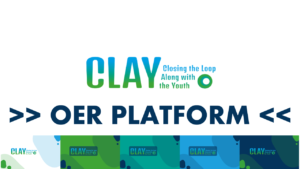![]()
Output 1: Circular Economy Methodological Framework
A methodological framework in the form of a handbook will be developed to boost the key competences and circular economy skills of young people. Also, best practice examples will be collected in all partner countries to demonstrate that circular economy is not an abstract concept, but already successfully implemented in different countries and sectors.
![]()
Output 2: Circular Behaviour Index
Young people in all partner countries will be examined. Combined with a screening of circular economy literature, an index will be developed in order to measure both attitudes and behaviors of young people on circular economy. This index will help to understand how young people are participating in circular activities and moreover, attitudes and behaviors of closing the loop approach will evaluated. This index will be applied and data will be collected and analyzed.
![]()
Output 3: Moving Towards Circular Economy with Youth
Training materials for the target group will be developed, based on blended learning theories and models. The training materials will consist of 5 modules, focusing on the differences between linear economy and circular economy, the concept, design and strategies of circular economy and corresponding EU Policy Frameworks and financing products, instruments and services.
ProEduca developed the content for Module 1 “LINEAR VS. CIRCULAR ECONOMY” and Module 2 “EXPLORING CIRCULAR ECONOMY”, Training 2000 developed the content for Module 3 “CIRCULAR ECONOMY ON A GLOBAL AND INTERNATIONAL LEVEL”, SBTC for Module 4 “STRATEGIES FOR CIRCULAR ECONOMY” and bit management for “CIRCULAR DESIGN”. Guide documents for blended learning (one for individual learners, one for teachers and trainers) were co-developed by ProEduca and bit management and reviewed by Training 2000 and SBTC.
The results of this output are available on the OER platform:
![]()
Output 4: CLAY OER Platform
The platform will provide information, tools, opportunities to collaborate, access to the learning materials etc. to the target audience. It will be used to promote activities, events, opportunities and key lessons for the target group.
Check out the CLAY OER platform here:




